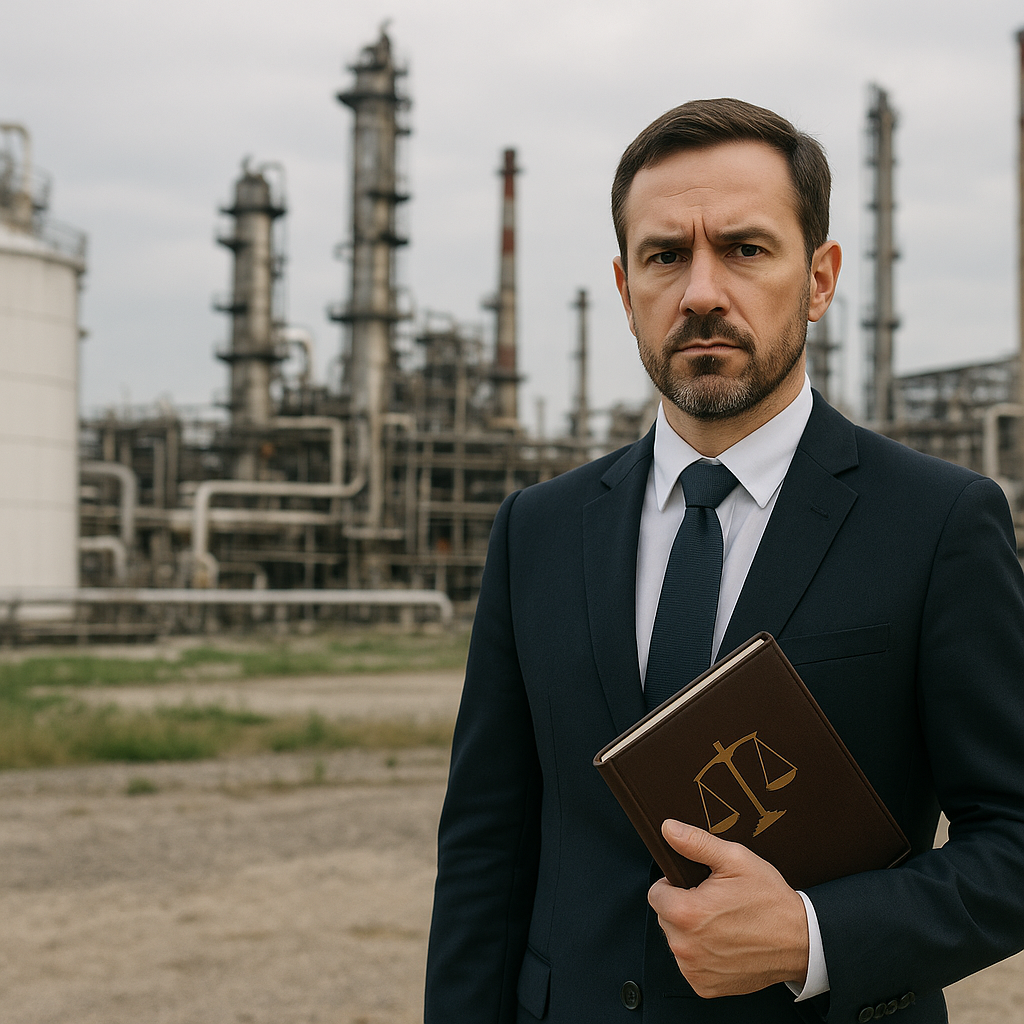Introduction
Oil refineries are critical components of the global energy supply chain, but they pose significant risks due to the complex and hazardous nature of their operations. Workplace accidents—such as explosions, fires, and chemical leaks—alongside environmental damages, including oil spills, air pollution, and toxic emissions, can have severe consequences for workers, communities, and ecosystems.
The legal evaluation of such incidents involves multiple legal frameworks, including labor law, occupational health and safety regulations, environmental protection laws, tort law, and criminal liability provisions. This article provides an in-depth analysis of how workplace accidents and environmental damages in oil refineries are legally assessed, highlighting theoretical foundations, legal responsibilities, procedural requirements, and practical case studies.
1. Legal Framework for Workplace Accidents in Oil Refineries
1.1. Occupational Health and Safety (OHS) Laws
- Most jurisdictions have comprehensive occupational health and safety legislation mandating employers to provide safe working environments.
- Employers are required to:
- Conduct risk assessments,
- Provide personal protective equipment (PPE),
- Implement safety training and emergency protocols.
1.2. Employer Liability
- Civil Liability (Tort Law): Injured workers or their families may claim compensation for medical expenses, lost wages, and moral damages.
- Strict Liability: In industries considered inherently dangerous (such as oil refining), employers may be held liable even without proof of fault.
- Workers’ Compensation Schemes: In some jurisdictions, a statutory system compensates injured workers, regardless of employer negligence.
1.3. Criminal Liability
- Employers, managers, or safety officers can face criminal charges (e.g., negligent homicide, workplace safety violations) if accidents result in serious injuries or fatalities.
2. Legal Framework for Environmental Damages
2.1. Environmental Protection Laws
- Oil refinery operations are classified as high-risk activities under most environmental statutes.
- Laws typically enforce:
- Emission and discharge limits,
- Hazardous waste management requirements,
- Mandatory environmental permits (e.g., air, water, soil).
2.2. Polluter Pays Principle
- Under environmental liability laws (e.g., EU Environmental Liability Directive or US CERCLA), refinery operators must bear the cost of:
- Cleaning contaminated sites,
- Restoring ecosystems,
- Compensating affected communities.
2.3. International Regulations
- If cross-border environmental damage occurs (e.g., oil spills affecting international waters), international treaties and conventions such as MARPOL or the Basel Convention may apply.
3. Common Types of Workplace Accidents and Environmental Incidents
- Workplace Accidents:
- Fires and explosions due to flammable hydrocarbons,
- Chemical burns from corrosive substances,
- Asphyxiation from toxic gas leaks,
- Falls from height and equipment malfunctions.
- Environmental Damages:
- Oil leaks contaminating soil and groundwater,
- Air pollution (volatile organic compounds, sulfur dioxide emissions),
- Waste mismanagement leading to hazardous byproducts,
- Marine pollution from tanker-loading operations.
4. Legal Procedures Following an Accident or Environmental Incident
4.1. Workplace Accidents
- Incident Reporting: Employers must immediately notify labor authorities and prepare an accident report.
- Investigation:
- Administrative Investigation: Conducted by occupational safety inspectors.
- Criminal Investigation: Prosecutors may initiate proceedings for negligence or regulatory breaches.
- Civil Claims: Injured employees or their families can file lawsuits seeking compensation.
4.2. Environmental Incidents
- Mandatory Notifications: Refineries must report environmental spills to regulatory authorities.
- Administrative Fines and Sanctions: Regulatory agencies may impose penalties or suspend operations.
- Civil Environmental Claims: Affected parties (e.g., local residents, fishermen) may seek damages for environmental harm and economic losses.
- Criminal Prosecution: Severe pollution events (e.g., deliberate dumping of hazardous waste) may lead to criminal charges.
5. Burden of Proof and Evidence
5.1. Workplace Accidents
- Injured parties typically need to prove the employer’s fault, unless strict liability applies.
- Evidence includes:
- OHS compliance documents,
- Witness testimonies,
- Expert reports (engineering, safety experts).
5.2. Environmental Damages
- Plaintiffs must establish causation between the refinery’s activity and the environmental harm.
- Courts often rely on:
- Environmental monitoring data,
- Scientific studies and chemical analysis,
- Satellite images and expert evaluations.
6. Case Law and Precedents
- Deepwater Horizon Case (2010): Although involving offshore drilling, the case illustrates the massive civil, criminal, and environmental liabilities that can arise from refinery-linked operations. BP paid billions in compensation for environmental and economic damages.
- Exxon Valdez Oil Spill (1989): Highlighted the importance of punitive damages in environmental cases.
7. Risk Mitigation Strategies for Oil Refineries
- Compliance Programs: Regular audits to ensure adherence to OHS and environmental standards.
- Safety Investments: Advanced monitoring systems, explosion-proof equipment, and fire suppression systems.
- Environmental Management Systems (EMS): Certification under ISO 14001 and similar standards.
- Insurance Coverage: Comprehensive liability insurance for workplace accidents and environmental disasters.
- Community Engagement: Transparent communication with local communities regarding environmental risks.
8. Role of Regulatory Authorities
- Labor Inspectors: Monitor compliance with workplace safety regulations.
- Environmental Agencies: Conduct periodic inspections, review permits, and enforce pollution standards.
- Judicial Authorities: Handle criminal prosecutions and civil lawsuits arising from accidents or environmental harm.
9. Future Legal Trends
- Stricter Environmental Regulations: Governments are imposing tighter limits on refinery emissions and waste.
- Climate Litigation: Lawsuits are emerging against fossil fuel companies for contributing to climate change.
- Corporate Due Diligence Requirements: New legal frameworks require companies to evaluate and report environmental and human rights risks in their supply chains.
Conclusion
Workplace accidents and environmental damages in oil refineries are evaluated through a multi-layered legal approach involving civil, criminal, and administrative liabilities. The polluter pays principle, combined with strict occupational safety requirements, places a heavy responsibility on refinery operators to prevent, manage, and compensate for harm.
To minimize legal exposure, refinery companies must implement robust safety measures, strict environmental compliance, and proactive risk management, while affected individuals should utilize expert evidence and legal remedies to claim their rights.

Yanıt yok